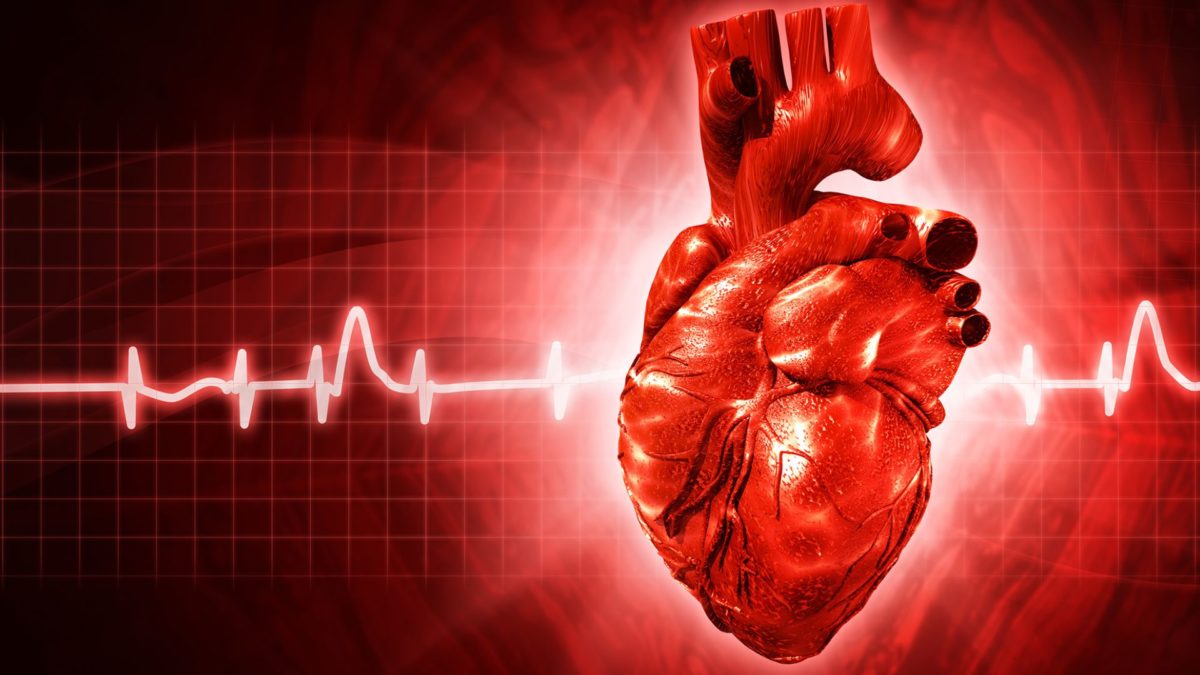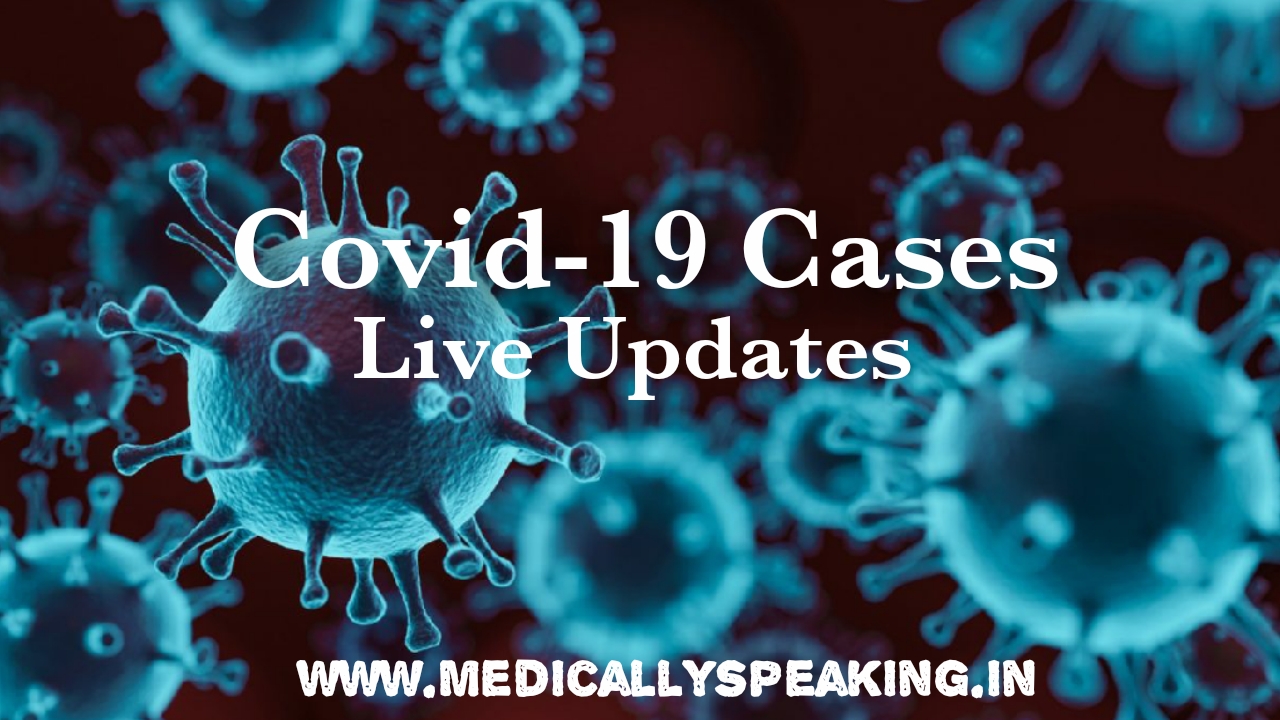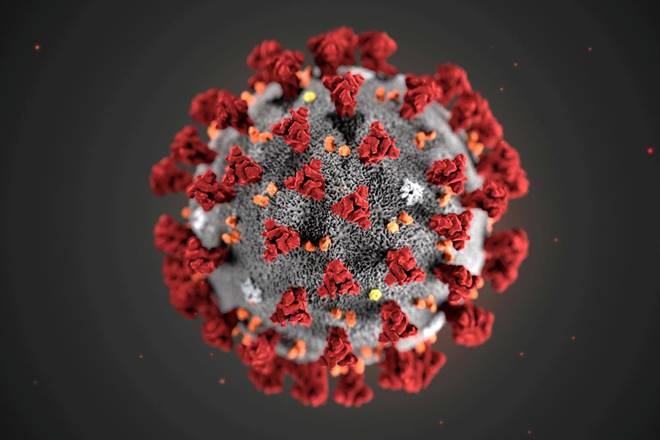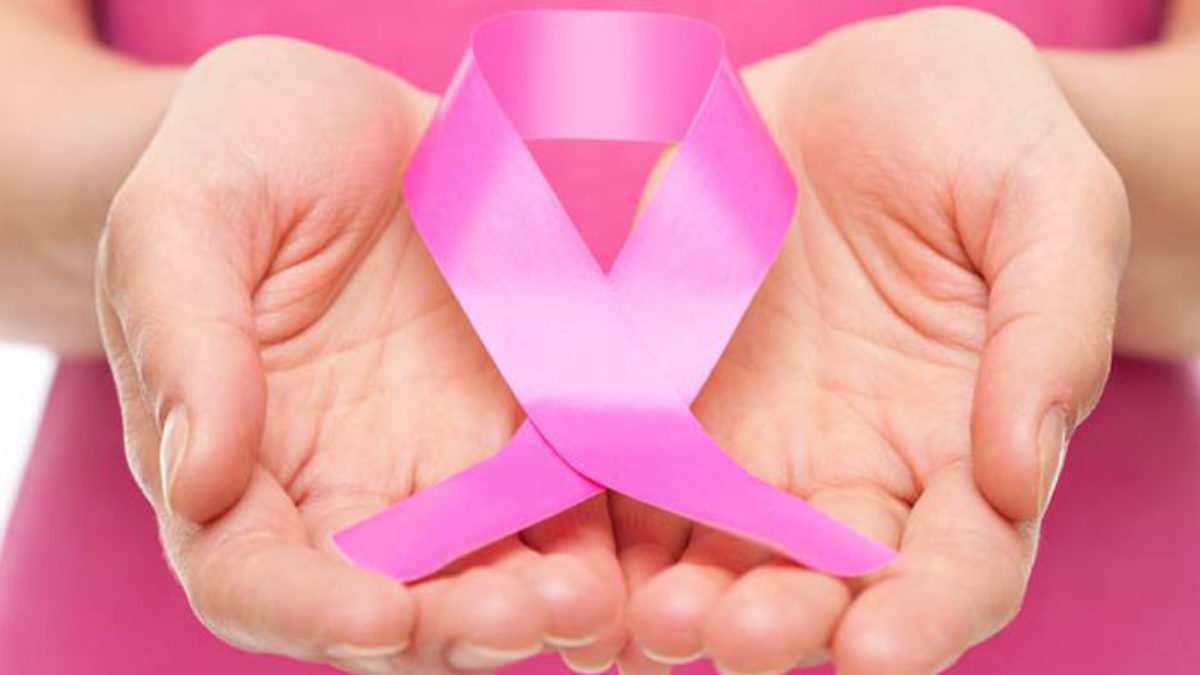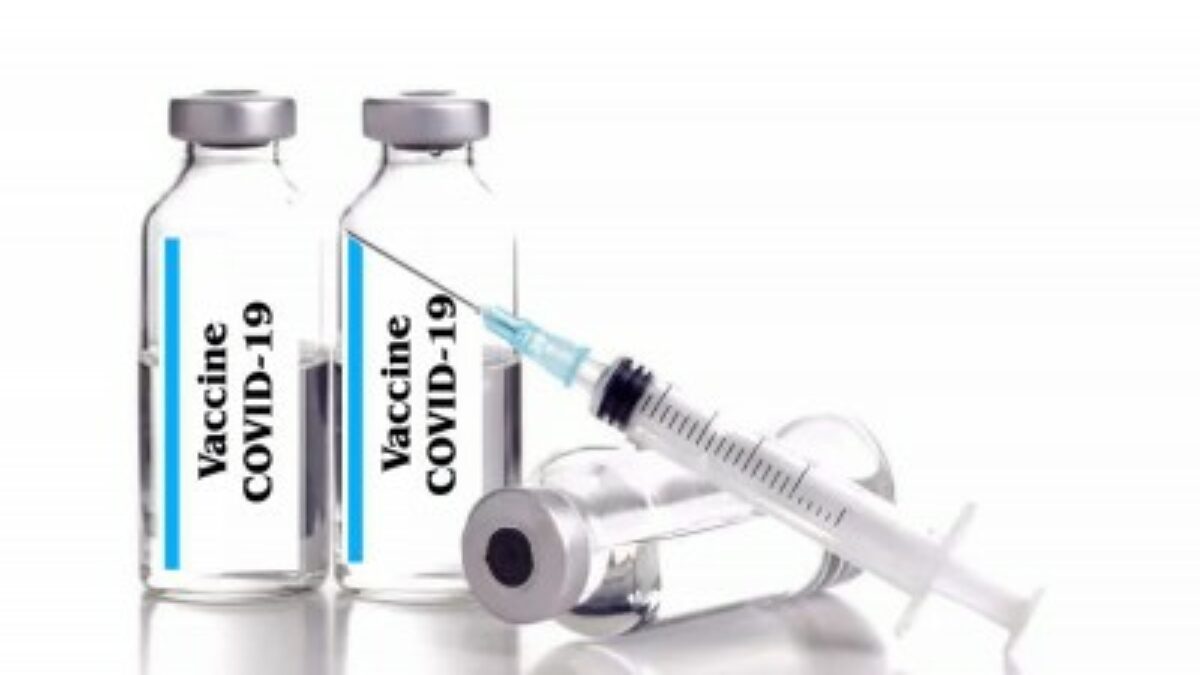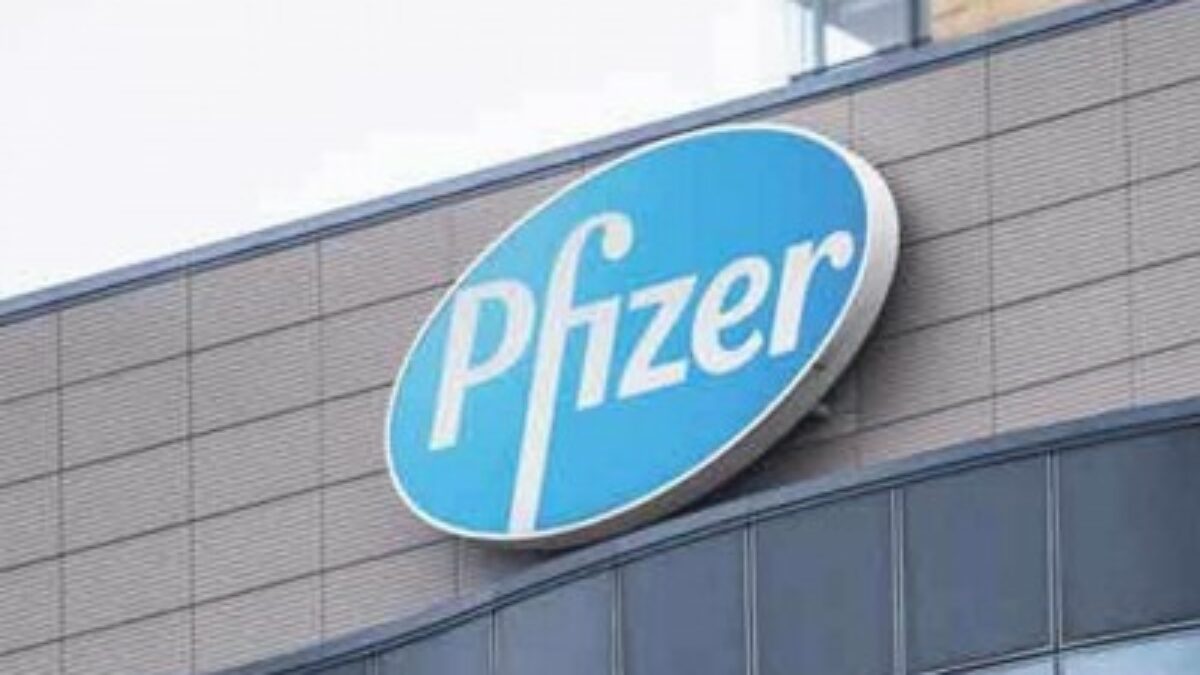Medically Speaking Team
Sudden Cardiac Arrest (SCA) is the number one killer in India, killing approximately 25 lakhs people every year. As per the data revealed by Delhi Economic Survey about 150 to 250 deaths happen in the city of Delhi every single day and out of these deaths, 25 to 45 deaths occurred due to Sudden Cardiac Arrest (SCA).
Sudden cardiac arrest (SCA) is a condition in which the heart suddenly and unexpectedly stops beating. If this happens, blood stops flowing to the brain and other vital organs. SCA usually causes death if it’s not treated within minutes.
CPR or Cardiopulmonary resuscitation is a life saving technique that helps in such condition. Medically speaking discussed about this technique and its importance with a very special panel that included: Dr. SSC. Chakra Rao, Chairperson, Indian Resuscitation Council (IRC), Dr. Rakesh Garg, Honorary Scientific Director, Indian Resuscitation Council (IRC), Dr. Aditya Kumar, Honorary Director Public Relations, Indian Resuscitation Council (IRC) and Dr. Nikki Sabhrawal, Instructor IRC.
What is CPR and what the common man can do really at a point of time if they are witnessing someone getting a cardiac arrest?
Dr. SSC. Chakra Rao, Chairperson, Indian Resuscitation Council (IRC): Sudden Cardiac Arrest is one of the most silent killer among all the things it is not a disease as such it is something like an incident or an event that happens to a victim I don’t call them as a patient they are victims of this sudden cardiac arrest and for a population of 1.38 billion definitely there are more than 5 crore people are suffering cardiac arrest every year and if Calculated in minutes 112 victims fall prey to this sudden cardiac arrest every minute so this is the very silent killer and we have to definitely weaken it is all reversible deaths actually so how we can prevent this to train more and more people in cardiopulmonary resuscitation the cardiopulmonary resuscitation is a very simple method and actually and all these deaths which are occurring or 80% of them of them are outside the house so there is a need to train the layman and schools mostly and I also say that even housewives should be trained because when you are in a group of trained people only you can be saved otherwise when there is nobody who knows some training it is very difficult to say but there are five methods where we can ask them or improve the training one is improve the training for all the people not only medics and paramedics to the and people in school children and make a telephone CPR you order or inspect somebody through telephone and do a CPR improve the emergency medical system and that is more important because we have a lot of inaccessible areas and in our India because of lot of differences roads congestions and all those things the ambulance cannot reach the victim within 3 minutes so we have to improve that so probably we may have to use some drones to carry the aids and another thing is the cardiac centers also have to help cardiac arrest centers means, it is not a very special device but everywhere wherever we sit even in a cafeteria or the cinema hauls, malls, and any place where there may be a congregation of people there should be some trained people in CPR and also there should be an availability of AED for the people then we can definitely improve the survival rate by about 50% and here one thing is any delay of even one minute with decrease this survival by 7 to 10 percent so these are method which we have to follow and the Indian Resuscitation council is trying to impress upon the people and the government to bring them all.
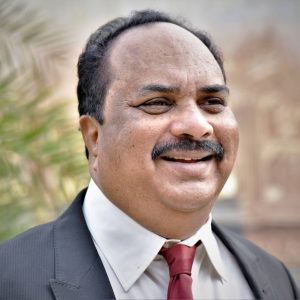
Dr. Garg help us understand what entails in this training?
Dr. Rakesh Garg, Honorary Scientific Director, Indian Resuscitation Council (IRC): The training is very simple for lay person it has been simplified so we can teach almost around 40 to 50 people in our time around for two hours or so it doesn’t take much and it’s scientifically evidence based. It takes around 15 – 20 minutes for a group of 40-50 and another practice of five minutes which we used to do on mannequin, mannequin is like a rubber human being on which we can show them how to compress on the chest because we’re talking about CPR. It is very doable and we have been going for last so many years now and not only in India but outside India, people are learning it so I think people should come forward to learn CPR.
Are you using social media platforms for this purpose? If so, how?
Dr. Aditya Kumar, Honorary Director Public Relations, Indian Resuscitation Council (IRC): Yeah, yesterday itself the chairperson Dr. Rao used Facebook Live and he addressed the youth about the information regarding this CPR. What is CPR, how can we do, what is importance of CPR; various issues he address so time we use all social media platforms. More than 80% cases of cardiac arrest happens outside the hospital. Youngsters are also approaching us time to time if they would like to have sessions in College, in their schools and universities in fact we do sessions and research time to time in colleges and schools.
Dr. Nikki, what is someone would do if they see that a person right next to them stops breathing for a few seconds with suspect that they could have a cardiac arrest or perhaps you already know someone has a history of heart disease?
Dr. Nikki Sabhrawal, Instructor IRC: The first and foremost is the creating the awareness of which we’ve been talking about, what CPR is, what is the importance, timely assistance and who can do it. So you know under the IRC we have formulated the first ever Indian guidelines for doing cardiopulmonary resuscitation and this is broken up into different parts so for the laypersons there’s a compression only life support, where only by chest compressions can they save a life. Now if our government intervenes and we make it mandatory for every citizen to learn the compression only life support, this can be a life saver. Secondly is the importance of the AED.
Because most cardiac arrests occur due to this disruption in the rhythm of the heart.
Are you in touch with policymakers are you in touch perhaps the Government of India to make it mandatory?
Dr. SSC Rao, Chairperson, Indian Resuscitation Council (IRC): When it comes to governance, it is now part of the CBSE curriculum, and we will all take it seriously in CBSE medium schools following the succession of Covid. If there are private schools that can afford to buy mannequins, we will undoubtedly go to them and train them. We’ve already contacted the directors of CBSE schools, who will provide a list of them, and we’re asking our people to approach them and tell them about it, as well as train their teachers so that they can train the students and teach them how to perform CPR, and then we’ll form a very good network of school children who will act as your first responders. Many doctors have approached the government, and we have already made CPR training necessary in some medical universities, and we will make it mandatory for NSS and NCC camps and other similar groups, resulting in a very large number of people who have learnt the procedure.
Dr. Garg, tell us about what you are advocating to the government and policymakers of our country and what are your advice for the youth to increase the awareness about this life saving technique?
Dr. Rakesh Garg, Honorary Scientific Director, Indian Resuscitation Council (IRC): I agree if with some policies if it can be mandatory in dome schools and colleges then its absolutely fine so schools should add this in their curriculum and we have already taken an initiative where it is a part, so I think the budding students were ambitious so if they are being thought then it obviously will be helping our community on the other side even if I teach somebody the necessary things about doing CPR and give them a certification but if they see somebody collapsing on a road and it isn’t their inner feeling wants to help them by giving CPR, it’s the big issue that’s why through your channel and media like you are definitely helping us in creating awareness its just not creating awareness but also inner consciousness which should be generated that the country, community and the society has given us so many things to us so why can’t we give something back to the community, so I think this kind of inner feelings should come out for the community from our side and we should not only learn it which we are providing a platform but also be ready to help in various formats and various platforms including the MNC from medical community including the government is working and supporting us a lot and CBSE is already taken an initiative so I think a big work is done all over and channels like you and the enthusiastic journalists are helping and supporting in this noble cause of creating awareness.
How are you trying to bridge it with people in rural areas where access to a doctor, even primarily healthcare maybe a few hours away?
Dr. Aditya Kumar, Honorary Director Public Relations, Indian Resuscitation Council (IRC): Actually the life donation is very big donation its an age old saying in Indian culture so people know all these things already so if we take the example of other countries like Europe, America, Singapore, Japan they had included the basic CPR, in their syllabus a long time ago but now due to efforts of Indian recession council we have get it included in CBSE and now we are trying to include it in local level and regional level because students go to school it they will learn through schools then it will impress them more rather than saying to them but other than that in recent times we are trying time to time through local newspapers or news channels or local rallies. We are trying our level best because our organization was started three years ago IRC. Afterwards on 16 October 2019 we had trained 7 lac people around the country free of cost which is a record in itself the world bodies across the globe really appreciated it like anything, because we are trying our level best but in recent times in Covid situation we are focusing upon TOT, that is teaching of trainees. We are making a network of trainers who will teach further to all the people when demand comes around the country but the rural divide is there so we are trying our level best through various awareness campaign and media like you.
How can someone save a life with bare hands?
Dr. SSC Rao, Chairperson, Indian Resuscitation Council (IRC): there is no need for expensive equipment. The two bare hands can save a life. When you notice a person on the ground fallen unconscious and tap on his shoulders, call for help if he doesn’t respond. You can dial 108 on your mobile and inform about your situation and place and don’t disconnect unless asked. Meanwhile, open the shirt and identify the xiphoid process that is located at the lowermost part of the sternum and measure two inches of distance with your finger. Now put your hand on the chest and interlock with the other hand. The heel of the hand should be on the sternum and then go on compressing for 120 compressions per min with 5-6 cm depth. This will definitely give the count of the blood to the brain and can save the patient. Meanwhile the AED will be brought. AED tells whether or not the patient needs to be given shocks. Henceforth, that patient can be transferred to the nearest medical facility.
Dr. Nikki would you like to add something to it?
Dr. Nikki Sabhrawal, Instructor IRC: These training programs need to be started at the school and college levels. It might be that someday your family member might be collapsing in front of you, you can do something to save their life. We have trained 1000s of individuals. If AEDs are available in Flights and malls and should be made available in schools, colleges and libraries also. If we don’t have an AED we continue with chest compression and that will help. This is my message to everyone that the training is available free of cost. People who are selling this equipment have saved many lives. We are training people, you should have the eagerness to come forward.
Should a person who has perhaps watched the videos but not sure or trained, perform a CPR?
Dr. Nikki Sabhrawal, Instructor IRC: Some effort is better than no effort at all. This process can be learned by everyone. Call for help, but continue with the chest compression till you get help.
Concluding the debate, Dr. Garg what would be your final message?
Dr. Rakesh Garg, Honorary Scientific Director, Indian Resuscitation Council (IRC): If we can save a life from sudden cardiac arrest, we have given something back to the society. I think the training program that Dr. Nikki talks about is a great initiative and I think that every individual should can get the training.
Dr. Nikki what are your concluding remarks?
Dr. Nikki Sabhrawal, Instructor IRC: Just like the principal of a school, president of RWA or the manager of a mall is responsible for running the show properly, it should be a priority to run these camps. We have done it here in Chanakyapuri, and in our hospital and trained 4-5 thousand people including the security staff and non medical people working at the hospital. Charges of these institutions should make it a part of their curriculum.
Dr. Aditya what is your message to the youngsters watching the show?
Dr. Aditya Kumar, Honorary Director Public Relations, Indian Resuscitation Council (IRC): Only 2% of the population is being trained for CPR in our country. If we talk about other countries, more people are aware about it because it is a part of their syllabus. So people should come forward to het the training as we are providing it free of cost. They can also visit our website which is www.cprindia.com and get registered.
In today’s times we are seeing so many people lose their lives due to Covid and it is a message to everyone that let’s not lose a life due to a cardiac arrest. As Dr. Garg said, making something mandatory is not the way. We need to realize the importance of this by ourselves. Get yourself registered at the website and save at least one life.
According to a recent provisional report by the Ministry of Health, India has reported 41,649 new cases and 593 deaths in the last 24 hours., taking the active caseload to 4,08,920. With 37,291 recoveries in past 24 hours, total recoveries reached 3,07,81,263.
Total Cases: 3,16,13,993
Death toll: 4,23,810
46.15 Cr. Vaccine Doses have been administered so far under Nationwide Vaccination Drive. More than 44.38 lakh (44,38,901) Vaccine Doses have been administered today, as per the 7 pm provisional report.
In the new phase of the universalization of the COVID19 vaccination drive, the Union Government will procure and supply (free of cost) 75% of the vaccines being produced by the vaccine manufacturers in the country to States and UTs, according to a recent release by the Health Ministry
Kerala imposes weekend lockdown amid rise in daily infections, state-wise Covid updates below
Kerala: With 20,772 new cases in the past 24 hours, the infection tally of the state reached 33,70,137 as of Friday night, while 116 more deaths pushed the fatality count to 16,701.
The high test positivity rate (TPR) of 13.61 per cent, despite fast-tracked vaccination drives, has forced the Pinarayi Vijayan government to impose complete lockdown in the state for the weekend – July 31 and August 1 – as an attempt to check the spread.
“There are many concerns, and rise in positivity rate is one. Cases are declining everywhere and transmission is continuing in Kerala. We need to discuss this with the state. It’s a comprehensive situation,” Dr SK Singh, Director of the National Centre for Disease Control, said upon arrival in Thiruvananthapuram on Friday night.
Tamil Nadu: New cases of Coronavirus, which had been decreasing for more than two months in Tamil Nadu, have begun to climb somewhat in the last two days. On Thursday, the number of new cases increased by 100, bringing the total to 1,859 cases. On Friday, the number of cases had risen to 1,947.
With 1,859 new cases today, the tally went up to 25,55,664 till date. Fatalities rose to 34,023 with 28 people dead in the last 24 hours.
Assam: Assam reported 20 fresh fatalities due to COVID-19 on Friday, while 1,179 more people tested positive, pushing the total number of infections to 5,65,209, the National Health Mission (NHM) said. Of the fresh fatalities, three each were reported from Barpeta and Jorhat, two each in Biswanath, Chirang, Kamrup Metropolitan, and Tinsukia, and one each in Baksa, Charaideo, Dibrugarh, Golaghat, Kamrup, and Nagaon districts.
Karnataka: With a spurt in new Covid cases, especially in districts bordering Kerala, Karnataka imposed additional measures to contain the virus spread, a top official said on Friday. “Deputy Commissioners (DCs) of all districts across the state may impose additional containment measures to reduce Covid cases,” said state revenue secretary N. Manjunatha Prasad. The DCs have also been directed to monitor the Covid situation in their districts and take strict surveillance measures.
Jharkhand: Jharkhand registered 56 new COVID-19 cases in the last 24 hours, pushing the tally to 3,47,105, a health department bulletin said on Friday. The coronavirus death toll remained unchanged at 5,126 in the state as no fresh fatality due to the contagion was reported, it said.
West Bengal: West Bengal on Friday reported 711 new COVID-19 cases and five more deaths, the state Health Department said. The North 24 Parganas district recorded the highest number of new cases at 101, while Kolkata reported 74 cases, it said. The state has so far reported 15,27,250 cases and 18,128 deaths, it added. In the last 24 hours, 835 people recovered from the disease, improving the recovery rate to 98.08 per cent.
Apollo Hospitals Group and Microsoft India redefine care process for MS Teams users
The digital Arm of the Apollo Hospitals Group and Microsoft India have joined hands to launch Enterprise Solution that can be utilized by organizations to provide their employees access to a holistic health and wellness solution within the Microsoft work suite. The Enterprise Solution – as integrated by Apollo 24|7 – has been tested in a pilot program for Microsoft India employees for a period of three months, according to a recent press release.
As part of the pilot program, 5000 Microsoft employees were given the access on this enterprise platform and over 50% of them chose to take virtual consultations with an Apollo doctor during the months of April–June. In addition to virtual consultations, over 2,600 medicine orders were also placed using the App, which were delivered at the doorsteps of the consumers in record time. Each of the registered Microsoft employees had access to over 7,000 doctors and specialists across the Apollo network.
Given the current scenario and with the third wave of COVID looming, organizations have been increasingly on the lookout for digital healthcare solutions to support their employees and families. Now, with deep integration of Apollo 24|7 with Microsoft Teams, a user has access to medical teleconsultation, vaccine booking, pharmacy, diagnostic tests, electronic health records, and wellness programs with just a click of the button.
“Healthcare is evolving to meet the immediate and future demands during the global health crisis. With the advancements in technology, people across the globe are embracing digital healthcare solutions. Apollo 24|7 has been developed to provide access to quality care to everyone. We are excited to partner with Microsoft during this pandemic to support organizations for employee wellbeing” said Madhu Aravind, CTO, Apollo 24|7.
The latest digital health offering by India’s largest healthcare provider combines Apollo Group’s extensive physical network and capabilities with a comprehensive and distinctive digital ecosystem.
Talking about the association, Microsoft’s Executive Director, Strategic Growth, Meetul Patel said, “In today’s hybrid work environment, organizations are increasingly looking to make access to wellness resources easier for their employees. Our partnership with Apollo has helped bring this access right into the flow-of -work by making resources easy to access from within Microsoft Teams which serves in so many ways as the “Office” in the emerging work environment”
The Enterprise Solution enables a user to consult an Apollo Doctor within 15 minutes of requesting for a consult; order medicines from the wide network of Apollo Pharmacies; and request for sample collection from home for prescribed diagnostic tests within Microsoft Teams itself.
Apollo 24|7–Microsoft Teams integration has created a unique solution for organizational wellbeing, and can be enabled for enterprises very quickly. The solution allows organizations to provide the entire Apollo ecosystem in the palm of their respective employees thereby empowering the employees to manage the health and wellbeing of their loves ones.
Drug firm Zydus Cadila on Friday said it has received final approval from the US health regulator to market Fulvestrant Injection, used in the treatment of breast cancer.
Fulvestrant injection is used alone or in combination with other drugs to treat a certain type of hormone receptor positive, advanced breast cancer (breast cancer that depends on hormones such as estrogen to grow) or breast cancer that has spread to other parts of the body in women who have experienced menopause.
Zydus Cadila has received final approval from the US Food and Drug Administration (USFDA) to market Fulvestrant Injection, 250 mg/5 mL (50 mg/mL) per single-dose pre-filled syringe, the company said in a statement.
Zydus Cadila said the drug will be manufactured at the group’s formulation manufacturing facility at Zydus Biologics, Ahmedabad.
The group now has 320 approvals and has so far filed over 400 abbreviated new drug applications (ANDAs) since the commencement of the filing process in FY 2003-04.
AstraZeneca and Sputnik V combination show no adverse events: RFID
The Russian Direct Investment Fund (RDIF) has announced initial safety results of the world’s first study of a combination between the AstraZeneca vaccine and the first component of the Sputnik V vaccine in the Republic of Azerbaijan.
In a statement, RDIF said that the heterogeneous boosting approach (“vaccine cocktail” using human adenovirus serotype 26 as the first component and human adenovirus serotype 5 as the second component) was at the core of Sputnik V. With this approach proving successful in creating a longer and more durable immunity against the coronavirus, RDIF took the lead in initiating partnerships with other vaccine producers to conduct joint studies of a combination of the first component of Sputnik V with foreign vaccines.
The statement also notified that the first partnership of this kind was concluded in December 2020 in the presence of Vladimir Putin, President, Russia. RDIF, The Gamaleya Center, AstraZeneca and R-Pharm signed a Memorandum of Intent aimed at cooperation in vaccine development.
Studies on the safety and immunogenicity of the combination of the AstraZeneca vaccine and the first component of the Sputnik V vaccine in Azerbaijan began in February 2021. Till date, 50 volunteers have been vaccinated and new participants are invited to join the trial. The interim analysis of the data demonstrates a high safety profile for the combined use of the vaccines with no serious adverse events or cases of coronavirus after vaccination, said the statement.
It further notified that RDIF and partners will publish the initial data on the immunogenicity of the combined use of the AstraZeneca vaccine and the first component of the Sputnik V vaccine in Azerbaijan next month.
Kirill Dmitriev, CEO, RDIF, said, “As new strains of coronavirus emerge, partnerships between vaccine manufacturers and combining different vaccines are key to successfully fight the pandemic. Based on the high efficacy of the heterogeneous boosting (“vaccine cocktail”) approach, RDIF was the first in the world to initiate partnerships with other coronavirus vaccine manufacturers. The first partnership of this kind was a joint clinical trial with AstraZeneca. We look forward to its success in Azerbaijan and other countries, which will allow a more effective implementation of vaccination programmes and protect people around the world. We consider it important to conduct joint research on combining the first component of Sputnik V with vaccines from other manufacturers for a more effective fight against emerging new strains of coronavirus.”
The statement added that the clinical trials of a combination of vaccines are being carried out in several countries as part of a global programme. Volunteers are being vaccinated in the UAE, and regulatory approval to conduct trials has been granted in Russia and Belarus.
Irina Panarina, General Manager, AstraZeneca Russia and Eurasia, said, “A heterogeneous prime-boosting involving administering components of different vaccines to a patient is one of the most promising vaccination regimens to study. It is becoming especially relevant now, when the issue of preventing the spread of new strains of coronavirus infection is acute, and the need for revaccination of the population is also coming to a head. That is why the results of the study can be of great importance for those countries where both, the vaccine by AstraZeneca and the University of Oxford, and the Sputnik V vaccine are registered.”
Adding to it, Vasily Ignatiev, CEO, R-Pharm Group, commented, “The initial results obtained at times when the delta strain is spreading are important for assessing the safety and early efficacy of the vaccine combination. We will continue researching and analysing the data with the prospect of a publication in an international journal.”
New drug combination discovery makes curative surgery possible for liver cancer patients
In a recent trial, researchers discovered that combining the immunotherapy medication nivolumab with the kinase-inhibitor drug cabozantinib can allow certain liver cancer patients who would otherwise be deemed surgical candidates to have curative surgery.
Results published in the journal Nature Cancer by researchers at the Johns Hopkins Kimmel Cancer Center described the benefits of this drug combination.
Among 15 people with hepatocellular carcinoma (HCC) in the study who could not be treated previously with surgery, the drugs allowed 12 patients to undergo successful surgical removal of their cancer. Five of these patients had only 10% or less of their tumour remaining after the drug treatment.
The combination therapy offers a much-needed treatment for HCC, which makes up more than 90% of all primary lover cancers and is the fourth leading cause of cancer-related death worldwide. Fewer than 30% of HCC cases globally cam be surgically resected at the time of diagnosis, either because the liver is too damaged or cancer has spread into tissues that make surgery too difficult.
“The patients who are enrolled in this study are typically just thought of as incurable in the current conventional sense, so the fact that we saw these responses was really exciting because this suggests this strategy could be adopted for very challenging incurable diseases,” says Won Jin Ho, M.D., assistant professor of oncology at the Johns Jopkins University School of Medicine an first author of the study.
A nurse has been arrested on Thursday for allegedly thrashing a two-month-old boy in a hospital in Shahdara’s Vivek Vihar, the police said.
The accused has been identified as Somayya (24), according to Deputy Commissioner of Police (Shahdara) R. Sathiyasundaram. During the investigation, it was discovered that she used to become intoxicated on the job. According to authorities, she was possibly inebriated on the night of the event.
The victim’s father — Sabeeb (28) from Uttar Pradesh’s Hathras — told the police that his wife delivered twins in May but one of their sons, Ahaan, fell sick on July 16. He then took Ahaan to a local hospital where the doctors asked him to take the baby to Delhi for better treatment. He then got his son admitted to Care New Born & Child Hospital in Vivek Vihar on July 18, as per a report by The Hindu.
The complainant said he was visiting the hospital daily. But on July 24, he received a call from the hospital that his son got injured.
Mr. Sabeeb immediately reached the hospital and found that Ahsan’s hand was fractured and his face was swollen.
Mr. Sabeeb alleged that the doctor refused to tell him how the incident happened and also threatened him with dire consequences if he approached the police.
The complainant said he managed to watch the CCTV footage of the room where his son was admitted.
In the footage, a nurse can be seen thrashing his son at around 4 a.m. on July 24, he alleged.
Mr. Sabeeb then approached the police on July 27. An FIR was registered under Sections 325 (punishment for voluntarily causing grievous hurt), 506 (criminal intimidation) and 34 (common intention) of the Indian Penal Code and under relevant Sections of Juvenile Justice Act on Wednesday night.
Further investigation is under way, the police added.
It is a common misconception that storing and maintaining Pfizer needs huge investment: Jesal Doshi, B Medical Systems
A few weeks ago, B Medical Systems, a global player in the vaccine cold chain industry, announced a partnership with Dr. Reddy’s Laboratories for the pan India rollout of Sputnik V vaccines.
B Medical Systems will be offering their vaccine freezers, which can store vaccines at temperatures as low as -25°C. To address the immediate needs, these units were delivered by air freight from Luxembourg.
According to Jesal Doshi, Deputy CEO of B Medical Systems, it is tough to alter people’s minds about vaccine efficacy while kept in an ice box or a local refrigerator. Mr. Doshi claims that various vaccinations require different temperatures and that if they are not provided the appropriate temperatures, they would lose their efficacy.
Mr. Doshi claims that Pfizer is a very effective vaccine with a logistic cost of less than a rupee, and that the Indian government’s failure to get the vaccine into the nation is a source of significant concern.
Here are a few excerpts from the discussion with Mr. Doshi:
You have recently tied up with Dr Reddy’s lab for pan-India rollout of Sputnik V. Tell us more about that? Tell us about the work B Medical has done to help with the rollout of Covid 19 vaccines?
Jesal Doshi: For more than 40 years, B Medical Systems has been the world’s oldest and biggest firm dedicated only to the cold chain of vaccinations providing safe transportation for vaccines, pharmaceuticals and blood. We are a company based in Luxembourg, Europe, and we have been operating there until early this year, when we were invited to start manufacturing in India by Prime Minister Narendra Modi. We built up our own manufacturing plant in India after receiving that invitation in a record-span of four months. This is the first time we’ve manufactured outside of Luxembourg, and I’m quite proud of the fact that we chose India to do so.
Coming to the pact with Dr. Reddy’s, nearly every vaccination is temperature sensitive and may lose its potency if not kept at the proper temperature. Sputnik requires a temperature of -18 degrees Celsius for storage, whereas other vaccinations require a temperature of 2-8 degrees Celsius. Pfizer, on the other hand, requires storage at -60°C or lower, making it difficult to retain these vaccines at a proper temperature under such harsh circumstances, which is where we come in. We ensure that any vaccine, at any temperature under any condition is maintained correctly and hence assuring that the recipient receives the rightly stored and transported vaccine.
There are many areas where the terrain may be hostile, electric supply may be erratic – How do you manage in such areas?
Jesal Doshi: There are two different challenges, one being the terrain and the other one being very peculiar to the nation, i.e., “Thanda Hai To Chalta Hai” wherein people use iceboxes and cold-drink refrigerators for storing vaccines that require a temperature of 2-8 degree Celsius, rendering them totally useless.
Second, our firm employs equipment that operates on a wide range of power sources. For example, we have equipment that can run entirely on solar energy, a DC battery, kerosene, or regular power. Using any of these power sources, they can all sustain temperatures ranging from -18 to 25 degrees. We operate and maintain the whole cold chain supply in extremely remote locations such as Afghanistan and Congo.
We already have immunisation programmes in India but here we are talking about vaccinating the entire adult population is this country – do you think we have the cold chain support to do that?
Jesal Doshi: India has administered more or less about 40 crore people and believe it or not, it was the easy part of the journey because now we will face issues reaching people in the most difficult locations. If you look at the figures, you will notice that majority of the population in the rural areas haven’t received vaccines yet.
We are providing solutions to the central as well as the state government and working with Dr. Reddy’s for the Sputnik. We are ensuring that vaccines reach the remotest areas so that every individual is vaccinated.
For the benefit of your views help us understand the importance of a reliable cold chain system in these times?
Jesal Doshi: I think even if you have the best vaccine in the world, it will not work without an appropriate cold chain. Vaccines can decompose if not dealt with the right temperature. Most nations immunise all of their children, but after decades of mass immunisation, we have yet to reach a 100% vaccination rate, with the main issue being a lack of effective cold chain.
In India, there is an absence of an appropriate cold chain to take charge of the Sputnik vaccine. This is also the reason why Pfizer has not been introduced in the country. Till now, we have introduced Pfizer in more than 25 countries around the world including Africa.
Is India ready or will be prepared to bring Pfizer into the country considering the high efficacy of the vaccine?
Jesal Doshi: It is a misconception that storing and transporting Pfizer needs huge investment. When you look at the challenges around the vaccine shortages, it is very affordable to bring vaccines like Pfizer into the country, transportation of which costs not more than a rupee.
How can India improve its current cold chain system?
Jesal Doshi: In such cases, increasing vaccination availability might be a viable option. You must adhere to a regimen and ensure that there are no negative repercussions. Pfizer, for example, is widely disseminated around the world because to its effectiveness and lack of reported adverse effects. The vaccination is still not available in the country, which is a source of great disappointment for me.
Take us through the challenges you faced during this drive bad the lessons learnt from it.
Jesal Doshi: It is a matter of great pride for India to be regarded as the world’s vaccine capital, but the issue today is to maintain and supervise the safe storage and transportation of vaccines. Real-time monitoring is provided, allowing you to follow the availability of vaccinations throughout the world and ensure that each one is properly maintained. You can help save lives by maintaining a proper cold chain.
Mr. Doshi’s advise on the necessity for improvements in health infrastructure and vaccine availability during this epidemic, in which many people are dying, is extremely important.


